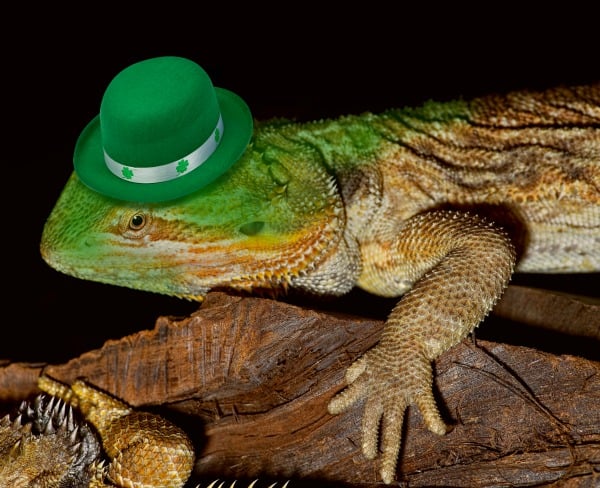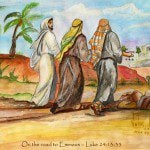About this time of year people find themselves wondering, “Do I drink too much?”
Also, they wonder about the historical figure of St. Patrick. Who is he? When did he live? Why did he live? Did he also drink too much? Do leprechauns drink too much? What’s in those pipes leprechauns are always smoking, anyway? Do leprechauns crave Lucky Charms because they have the munchies?
Well, I can’t answer all of that. But I’m pretty sure I do know all about the history of St. Patrick, which I am happy to share with you now.
As a young man, “Lucky P,” as he would have been known to his friends if only he’d had any, was a bony, balding, heel-clicking gadabout, always doing magic tricks and charmingly scamming children out of their morning meals and jewelry. Decidedly dapper, Pat lived a happy, carefree life. But, as he grew older, Pat found himself increasingly distressed by the fact that his beloved home glen, known to the local townsfolk as Gakearnei Egrhhe o Kieaierainieau Blagraiehor o’er Lehkrkhaerneyai nee’ O’Ianietraneourenlochnegear by the Bay, was slowly but surely being taken over by green alcoholic snakes.
“Tis the work of Beelzebub!” famously declared Pat. Though he only liked saying the name and had no zero idea who Beelzebub was, Pat was one day nonetheless stirred to genuine action when, as he was strolling along the banks of a bonny brook, a snake with an inner ear infection accidentally became entangled in one of the outsized buckles of his giant Pilgrim shoes.
“Aarrrrgh!” cried Pat, frantically shaking his foot. “I have had it with these mother[deleted] snakes in this mother[deleted] glen! That’s it. From now, on I’m a Christian.”
Incredibly, this was before the time of Christ. But his anachronistic spiritual galvanization gave Pat the strength, conviction, and exceptional whittling skills he needed to, right there on the river’s bank, carve a small flute out of a much bigger flute, which he immediately used to play “The Blarney Blues,” an improvised song so hauntingly mellifluous that not one of the snakes anywhere near him at the time could resist the urge to come out of hiding, curl up around Pat’s feet, and heartily attack his crotch.
“Haarggh!” cried Pat, leaping up and heartily clicking his heels. “Always after me lucky charms!”
Later, alone (for he spent much time alone; he had terrible breath), Pat had an idea.
“I know!” he exclaimed. “I’ll walk briskly toward the gates of the town whilst continuing to blow my flute! Surely all of the snakes will follow me right out of town, because snakes are just that stupid! And then we’ll be rid of them! Yay for me!” So he did, and they did, because snakes really are that stupid.
Today, of course, we remember St. Patrick as the plucky, tone-deaf little boozer who led all the snakes out of Ireland and straight into Africa—which is why, in Africa today, it’s still an insult to suggest a person “go pat” themselves. And the reason that we associate the color green with St. Patrick is because of how green with envy all his leprechaun pals became once they realized that while Pat would become famous for playing music irresistible to creatures with no arms, legs, feet, or ears, the best they could hope for was to be remembered for their proclivity for jauntily straddling mushrooms, smoking, and ingesting freakish amounts of refined sugar.


















